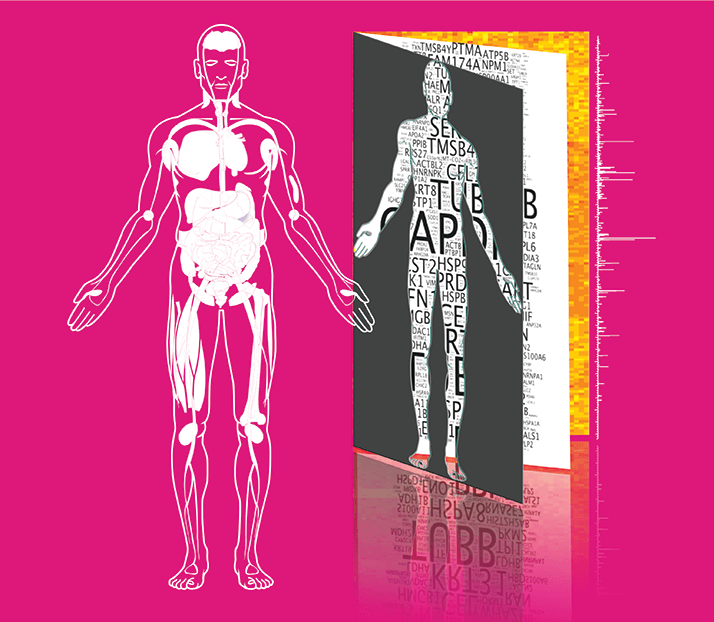While Bernard Kuster and his colleagues were compiling ProteomicsDB, a separate team of researchers at Johns Hopkins University, Baltimore, USA, and the Institute of Bioinformatics, Bangalore, India, tackled the challenge in a different way, using a single mass spectrometry platform and data analysis pipeline to generate data (1). Their study identified proteins encoded by about 84 percent of all the genes in the human genome predicted to encode proteins, plus 193 proteins that geneticists had not predicted. Here, two of the authors of the study – Akhilesh Pandey, Johns Hopkins professor and founder and director of the Institute of Bioinformatics, and Harsha Gowda, a scientist at the same institute – discuss the project.

Why take on such a big challenge? One of the main goals of the Human Genome Project was to discover all the protein-coding genes in humans, but this was not satisfactorily achieved after the completion of the project. Although many biomarkers and therapeutic targets used in clinics are proteins, all the protein estimates and their sequence were largely derived using indirect methods without using any technology or platform that directly monitors proteins. Advances in mass spectrometers and our vast experience and familiarity with proteomic methods and the human proteome prompted us to take up this study. Another driving factor was that we knew this was important to the proteomics community, but realized that scientists were trying to figure out the ‘best’ way to accomplish it. We took the most straightforward approach of using mass spectrometry. Finally, although there is a lot of focus on trying to understand disease, we have been frustrated by the lack of understanding of what is normal in the first place, without which we cannot hope to understand what is abnormal.
How does your study compare with the work led by Bernhard Kuster? Actuallly, we were not aware of a parallel effort by Kuster and colleagues to map the human proteome until three days before the publication in Nature. It was a surprising coincidence! The datasets are complementary and the research community now has the advantage of referring to multiple lines of evidence for each protein from independent laboratories. It will be interesting to compare our datasets to extend our understanding of the human proteome. What did you hope to achieve? One of the main aims was to obtain experimental evidence for most of the annotated human proteins in public databases. In the process, we wanted to generate high quality MS dataset for the human proteome along with a baseline protein expression pattern for histologically normal human tissues. We were also clear from the beginning that we should carry out proteogenomic analysis. This was important for us to demonstrate that the traditional way in which we analyze proteomic data may be missing a lot of information simply because of the limitations of existing protein databases.
What were the big challenges? The first challenge was simply to get sufficient instrument time. The second challenge was to deal with the large amounts of data generated. Analyzing vast amounts of data is computationally expensive, so we had to figure out efficient ways to achieve our goals with minimum resources; there was a significant manual analysis component. If we had to rely on specific funding for this project, we would probably still be waiting. Instead, we had to be ingenious, using funds that were for technology development. Next steps? The identification of several novel proteins that are not part of existing protein databases hints at the possibility of an expanded human proteome that has evaded detection. Further exploration is needed in that area. Post-translational modifications and alternatively spliced forms further add to the complexity – in that sense, there is much more work to be done before we can say we have a truly complete map of the human proteome.
References
- Min-Sik Kim et al., “A Draft Map of the Human Proteome”, Nature 509, 575–581 (2014).
